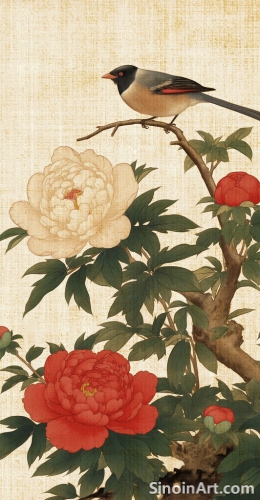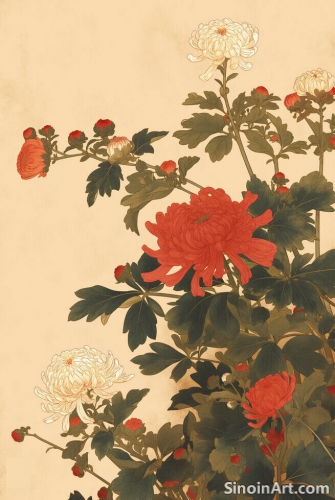Gongbi and the Influence of Buddhist Art
|
Buddhist art has had a profound influence on Gongbi painting, both in terms of its subject matter and its underlying philosophical principles. From the depiction of Buddhas and Bodhisattvas to the incorporation of symbolic elements, Buddhist themes and motifs have long been a source of inspiration for Gongbi artists. This influence adds a spiritual and philosophical dimension to the artwork.  The depiction of Buddhist figures in Gongbi paintings often adheres to strict iconographic conventions, ensuring that each image is a faithful representation of the deity’s characteristics and attributes. The depiction of Buddhas and other divine figures is often a part of the process of meditation and devotion for the artist. The artworks become expressions of both artistic skill and spiritual devotion.  The use of color in Gongbi paintings of Buddhist figures is also highly symbolic. Colors like gold, white, and blue are often associated with divinity and purity and used to enhance the spiritual impact of the artwork. The use of specific colors helps to create the overall tone of the piece and reflects the symbolism of Buddhist traditions.  Beyond the depiction of Buddhist figures, Gongbi paintings also incorporate elements from Buddhist philosophy, such as the emphasis on mindfulness, compassion, and the interconnectedness of all things. These philosophical aspects enhance both the meaning and the meditative quality of the art. The emphasis on meticulous detail and precise execution in Gongbi painting aligns with the Buddhist emphasis on mindfulness and focused attention. The act of creating art in this way can be seen as a form of spiritual practice for both artist and viewer. The creative process can become a contemplative and devotional experience. Ultimately, the influence of Buddhist art on Gongbi painting adds a deeper layer of meaning and significance to the art form, creating works that are both aesthetically beautiful and spiritually profound. The infusion of spirituality adds an additional layer of meaning and significance to the works. |
Tag : Gongbi Buddhism, Buddhist art, spiritual painting, religious art, iconographic art
Related information
- The Influence of Western Art on Contemporary Gongbi Painting
- The Challenge of Large-Scale Gongbi Painting
- Learning Gongbi: A Guide for Aspiring Artists
- The Future of Gongbi: Digital Tools and Traditional Techniques
- Gongbi Painting and the Depiction of Auspicious Symbols
This article explores the influence of Western art on contemporary Gongbi painting, highlighting the adoption of new perspectives, compositions, materials, techniques, and themes, and how these influences have created a unique hybrid style.
This article explores the unique challenges of creating large-scale Gongbi paintings, including maintaining precision, acquiring specialized materials, managing composition, and the time-consuming process of layering colors and details.
A practical guide for aspiring Gongbi artists, covering essential learning steps, materials, and practice techniques.
This article explores the future of Gongbi painting, highlighting the use of digital tools to aid in the creative process, facilitate sharing, and expand the art form’s reach, while emphasizing the importance of maintaining traditional techniques.
This article explores the use of auspicious symbols in Gongbi painting, highlighting the meaning and cultural significance of these motifs, and how their depiction in these detailed works expresses wishes for good fortune, prosperity, and happiness.